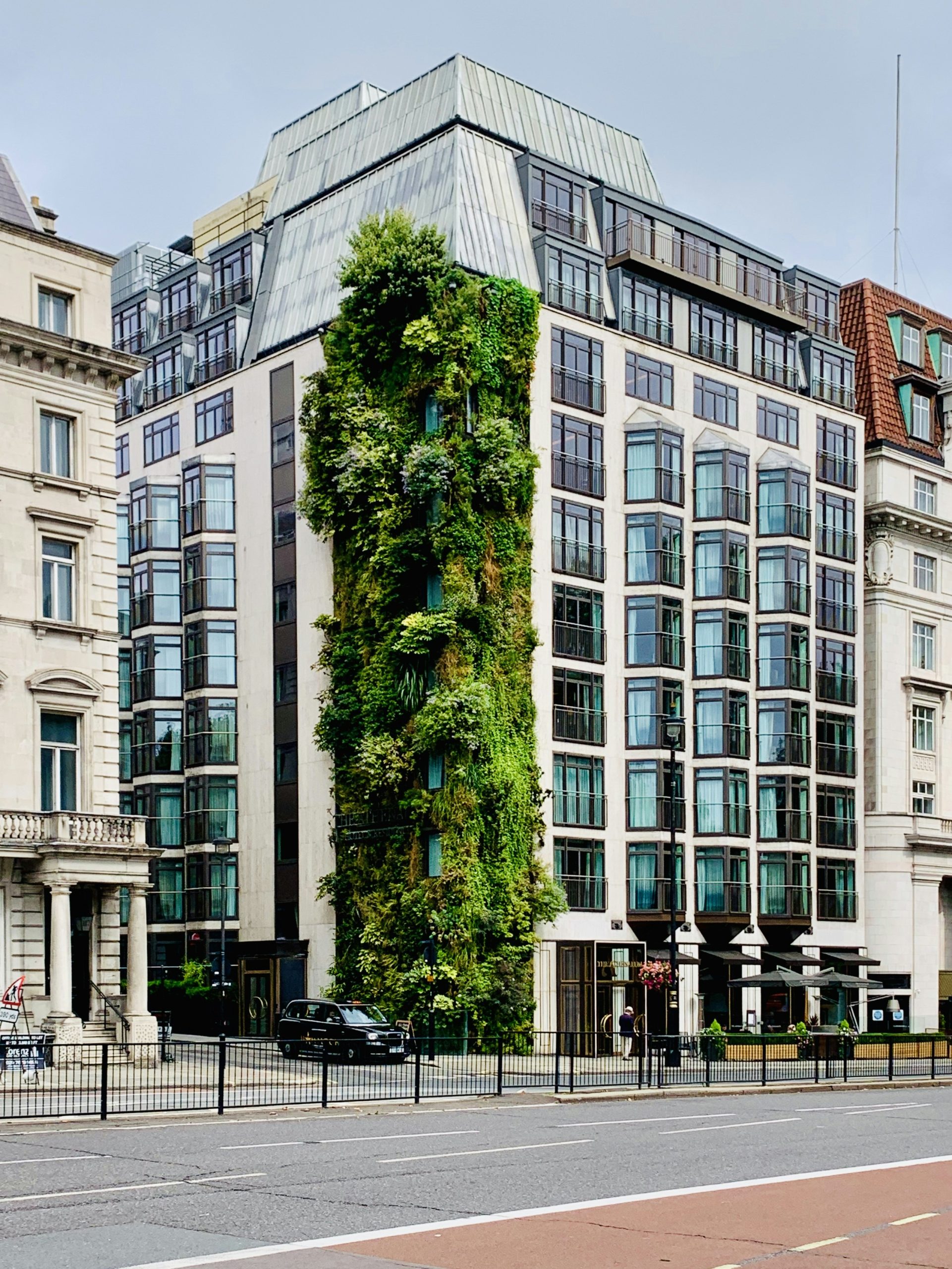In our ever-evolving world, the integration of technology in sustainable architecture has become an exciting and essential development. We’ve seen firsthand how innovative tools and methods transform our approach to designing and constructing buildings that harmonize with the environment. From advanced materials that improve insulation to smart systems that optimize energy use, technology is driving us towards a future where our structures are not just sustainable, but also smarter and more efficient. Our commitment to harnessing these technologies is not just about reducing our carbon footprint; it’s about creating a better world for generations to come. What role does technology play in sustainable architecture? This is a question we’ve all likely pondered as the global conversation around climate change and environmental responsibility intensifies. Our world is at a turning point where technological advancements and the need for sustainability intersect in meaningful ways. But how exactly does technology influence the design and construction of environmentally-friendly buildings? Let’s dive into the fascinating relationship between technology and sustainable architecture.
Understanding Sustainable Architecture
Before we can delve into the technological aspects, we need to grasp what sustainable architecture entails. Sustainable architecture refers to the design and construction of buildings that are environmentally responsible and resource-efficient throughout a building’s life-cycle. From siting to design, construction, operation, maintenance, renovation, and demolition, every phase should adhere to principles that aim to reduce the overall impact on the environment.
Principles of Sustainable Architecture
- Energy Efficiency: Utilizing resources that consume less energy.
- Sustainable Materials: Choosing materials that can be responsibly sourced and recycled.
- Water Efficiency: Reducing water waste and maximizing water reuse.
- Indoor Environmental Quality: Ensuring healthy indoor air quality and natural lighting.
- Site Planning: Minimizing the impact of the building on its environment.
With these principles in mind, we can better appreciate the role technology plays in achieving sustainability in architecture.
Technology’s Impact on Sustainable Architecture
Technology influences sustainable architecture through innovative construction techniques, smart building systems, and eco-friendly materials. Each of these areas is vital in ensuring that our buildings are not only efficient but also adaptable and resource-conscious.
Innovative Construction Techniques
Gone are the days when construction relied solely on traditional methods. Today, technology enables us to construct buildings in ways that were previously unimaginable.
Prefabrication and Modular Construction
Prefabrication involves assembling components of a building in a factory before transporting them to the construction site. Modular construction takes this a step further by creating entire units that can be stacked and configured in various ways.
| Benefits of Prefabrication/Modular Construction | Description |
|---|---|
| Reduced Waste | Factory settings allow for more precise material usage. |
| Lower Emissions | Less time on-site reduces machinery and transportation. |
| Increased Efficiency | Faster assembly times and reduced labor costs. |
3D Printing
3D printing in construction is a groundbreaking technology that allows for the creation of complex structures with minimal waste. This method can produce both small components and entire housing units by depositing material layer by layer according to a digital model.
| Benefits of 3D Printing | Description |
|---|---|
| Customization | Ability to create tailored designs and structures. |
| Material Efficiency | Precision minimizes waste. |
| Reduced Labor Costs | Automation reduces the need for manual labor. |
Smart Building Systems
Smart building systems are at the forefront of technological advancements in sustainable architecture. These systems can drastically reduce a building’s environmental footprint.
Building Management Systems (BMS)
A Building Management System integrates various building technologies such as HVAC, lighting, and security into one cohesive system, allowing for optimal performance and energy efficiency.
| Benefits of BMS | Description |
|---|---|
| Energy Monitoring | Tracks and optimizes energy usage. |
| Predictive Maintenance | Identifies issues before they become major problems. |
| Improved Occupant Comfort | Adjusts conditions based on real-time data. |
Internet of Things (IoT)
IoT refers to the network of physical devices connected to the internet, capable of collecting and exchanging data. In buildings, IoT can monitor and control various systems to enhance energy efficiency and occupant comfort.
| Benefits of IoT | Description |
|---|---|
| Real-Time Data Collection | Provides insights into energy usage and inefficiencies. |
| Automated Controls | Adjust lighting, temperature, and other systems. |
| Enhanced Security | Integrates with security systems for real-time alerts. |
Eco-friendly Materials
The selection of building materials plays a critical role in sustainable architecture. Technological advancements have introduced a plethora of eco-friendly materials that are both innovative and environmentally benign.
Sustainable Insulation Materials
Traditional insulation materials can be harmful to both the environment and human health. Modern alternatives like sheep’s wool, cellulose, and aerogel offer high performance without the negative side effects.
| Material | Benefits |
|---|---|
| Sheep’s Wool | Biodegradable and excellent thermal properties. |
| Cellulose | Made from recycled paper, highly effective insulator. |
| Aerogel | Superior insulation properties with minimal thickness. |
Green Roofing and Wall Systems
Green roofs and walls are living vegetation systems that contribute to energy savings, improved air quality, and enhanced aesthetics.
| System | Benefits |
|---|---|
| Green Roofs | Reduce heating/cooling needs, manage stormwater runoff. |
| Living Walls | Improve air quality, increase building insulation. |

Case Studies in Sustainable Architecture
To truly understand the synergy between technology and sustainable architecture, let’s consider a few compelling case studies.
The Edge, Amsterdam
The Edge is often touted as the world’s most sustainable office building. Located in Amsterdam, this state-of-the-art structure showcases how technology can harmonize with sustainability.
- Smart Lighting: Utilizes LED lights connected to Ethernet cables, allowing employees to personalize lighting via smartphones.
- Energy Efficiency: Solar panels generate more electricity than the building consumes, making it energy-positive.
- Water Management: Rainwater is collected and recycled for various uses within the building.
Bosco Verticale, Milan
Bosco Verticale, or the Vertical Forest, in Milan demonstrates how integrating vegetation into building designs can create a self-regulating microclimate.
- Biodiversity: The twin towers house 20,000 trees and plants, contributing to biodiversity in urban environments.
- Temperature Regulation: Vegetation naturally regulates temperature, reducing reliance on heating and cooling systems.
- Air Quality: The foliage absorbs CO2 and dust particles, significantly improving air quality.
Bullitt Center, Seattle
The Bullitt Center is a remarkable example of a living building designed to be self-sufficient in terms of energy and water.
- Net Zero Energy: The building generates as much energy as it consumes through an extensive array of solar panels.
- Net Zero Water: Rainwater is collected, treated, and reused for all water needs.
- Material Transparency: All materials used are non-toxic and sourced sustainably.
Challenges and Solutions in Sustainable Architecture
While technology can significantly advance sustainable architecture, it’s not without challenges. It’s essential to acknowledge these obstacles and explore potential solutions.
High Initial Costs
Many sustainable technologies entail higher upfront costs, which can be a deterrent for developers and investors.
| Challenge | Potential Solution |
|---|---|
| High Initial Costs | Long-term savings on energy and maintenance |
| Government incentives and subsidies | |
| Scaling technology to reduce costs |
Technological Know-How
The successful implementation of advanced technology requires specialized knowledge and skills, which may not always be readily available.
| Challenge | Potential Solution |
|---|---|
| Technological Know-How | Continued education and training for architects |
| Collaboration with technology experts | |
| Investment in research and development |
Integration with Existing Structures
Retrofitting existing buildings to meet sustainable standards can be complex and expensive.
| Challenge | Potential Solution |
|---|---|
| Integration with Existing Structures | Incremental upgrades to defer costs |
| Adopt modular systems for easier installation | |
| Government grants and tax breaks for retrofitting |

Future Trends in Sustainable Architecture
The future holds exciting possibilities for sustainable architecture. Emerging technologies and evolving mindsets promise to enhance our approach to design and construction even further.
Advanced Materials
Research into new materials that offer better sustainability profiles is ongoing. Innovations such as self-healing concrete, transparent solar panels, and biodegradable construction materials are on the horizon.
Artificial Intelligence (AI)
AI has the potential to revolutionize architecture by optimizing design for sustainability, predicting maintenance needs, and improving overall building performance.
Building Information Modeling (BIM)
BIM is a digital representation of the physical and functional characteristics of a facility. It serves as a shared knowledge resource for information about a facility, supporting decision-making throughout its lifecycle.
Renewable Energy Integration
As renewable energy technologies become more cost-effective, integrating them into buildings will become increasingly common. Innovations like building-integrated photovoltaics (BIPV) combine solar panels with building materials, making renewable energy sources less intrusive.
Conclusion
Technology plays an integral role in advancing sustainable architecture. From innovative construction techniques and smart building systems to eco-friendly materials and cutting-edge technologies like AI and BIM, the path to sustainable living is becoming increasingly accessible. By leveraging these advancements, we can create buildings that are not only resilient and efficient but also harmonious with our environment.
Through continuous innovation and a commitment to sustainable practices, we can redefine the future of architecture, ensuring that our built environments contribute positively to the world’s ecological balance. So, as we collectively strive for a more sustainable future, let’s embrace the powerful role that technology plays in turning our aspirations into reality.




